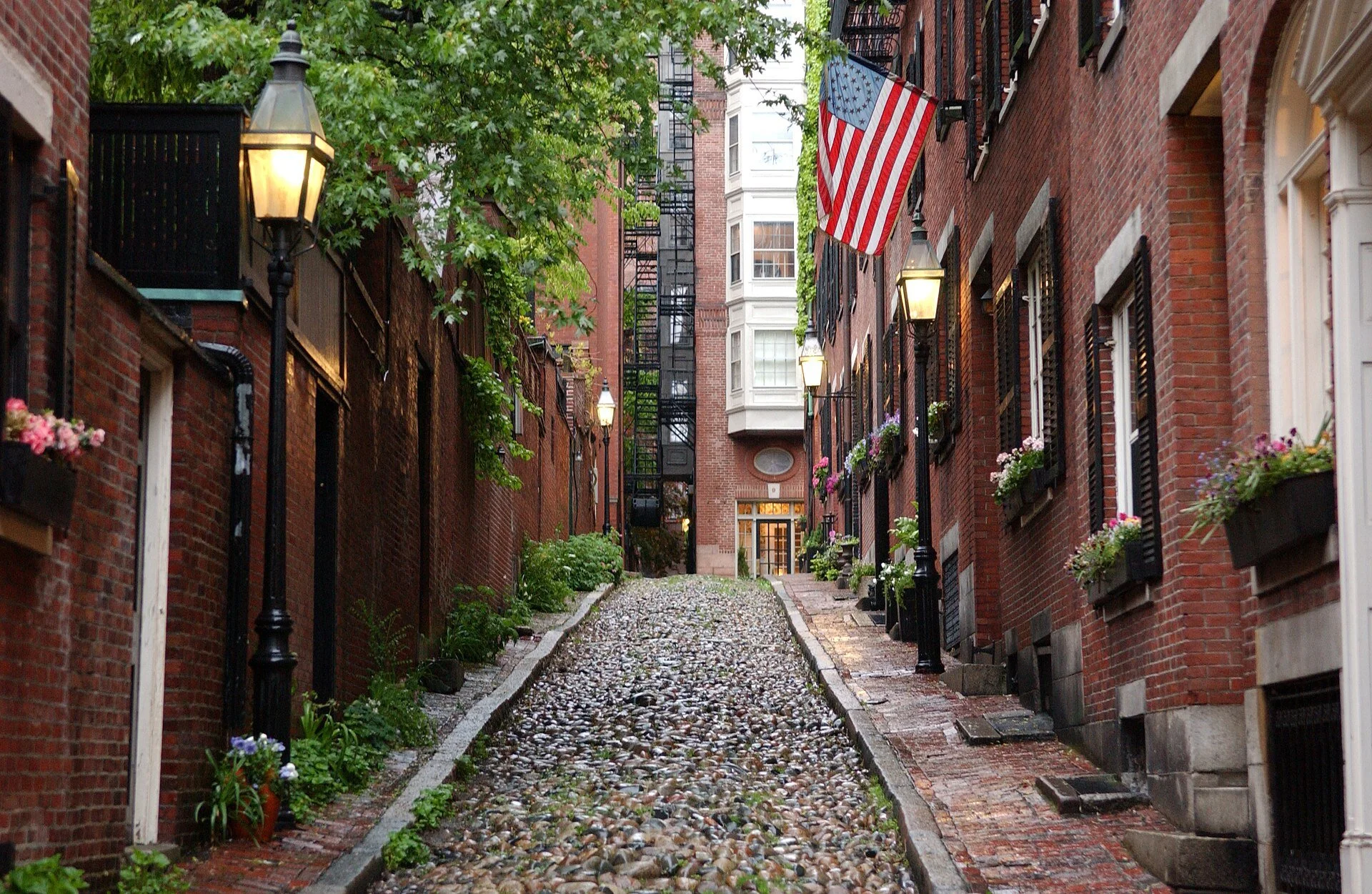A literary Hill
Window boxes on cobblestoned Acorn Street on Beacon Hill.
— Photo by Ian Howard
(Robert Whitcomb, New England Diary’s editor, is chairman of The Guardian. He edited but did not write this article.)
The imagery of Boston’s charming gas-lit streets and brownstone and brick Federal-style buildings have provided inspiration and residence to some of the most celebrated writers in American literature.
Beacon Hill, in particular, has been an historic home for greats, such as Louisa May Alcott, author of Little Women, and Nathaniel Hawthorne, author of The Scarlet Letter.
The neighborhood has been a source of vivid ink to others, such as Henry David Thoreau, who lived there in his childhood, and Robert Frost, who taught at Harvard University and other schools.
The loosely autobiographical Little Women, by Alcott, is a coming-of-age story about the overlap of childhood and young adulthood, a too swift liminal space where children want to be grown but are hesitant to grow up.
Alcott spent a considerable part of her early life in Boston from 1834 to 1840 before her family settled in Concord. However, she later returned to the city and lived on Beacon Hill in the early 1850s while working as a writer and a social reformer.
Her first published works, The Rival Painters: a Tale of Rome and Flower Fables were both published while she was living at 20 Pinckney Street. Her work as a women’s suffrage activist on Beacon Hill empowered her female characters with agency and self-determination.
Hawthorne, author of The Scarlet Letter, wrote love letters to his future wife from his home at 54 Pinckney Street while working at the Boston Custom House in the 1840s. Before that, he paid for room and board to the poet Thomas Green Fessenden on Hancock Street. He would later say of this period of his life, “I have not lived, but only dreamed about living.”
The heroine of his well-known novel grows beyond her longheld ideals after her Puritan community shuns her into isolation. Through protagonists that develop strong, individualistic approaches to the world,
Hawthorne and Alcott reflected the development of thoughts and views throughout a young adulthood which was spent in large part on Beacon Hill.
Many other authors and poets would have their brushes with Beacon Hill and Boston’s literary influence as well.
Henry James, renowned for the psychological depth of his approach to social complexities, lived at 102 Mount Vernon Street in the 1860s before moving to Europe. His time in Boston exposed him to the evolving nature of American society, a theme that permeates many of his works.
In the 20th Century, Beacon Hill continued to attract literary minds, including Sylvia Plath.
The renowned poet and novelist lived at 9 Willow Street while attending classes at Boston University and working at Massachusetts General Hospital. During her time on Beacon Hill, Plath was mentored by poet Robert Lowell and befriended fellow poet Anne Sexton. The city’s atmosphere and her personal experiences deeply influenced her work, particularly her novel The Bell Jar, which captures the struggles of a young woman navigating mental illness and societal expectations. The history of Beacon Hill is a testament to Boston’s enduring influence as a center of American literature.
These writers, among others, found inspiration in the city’s history, its people and its intellectual climate. Walking through the streets of Beacon Hill today, one can still feel the echoes of these literary greats, their presence lingering in the historic architecture and timeless charm.
